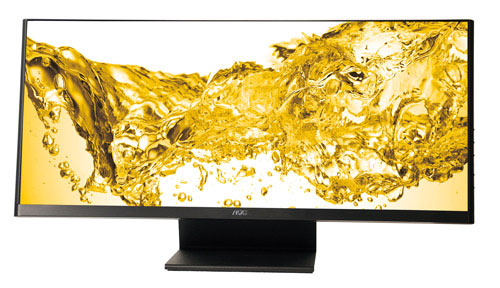Company Accelerates Expansion of 22nm Data Center Processor Families;
Graphics Innovations, Intel® Wireless Display Coming to Next-Generation Ultrabooks
NEWS HIGHLIGHTS
- Accelerates expansion of offerings across the data center processor product lines based on Intel’s innovative 22nm manufacturing technology.
- Aims to revolutionize the server rack design by delivering an Intel rack scale architecture for increased flexibility, density and utilization of servers leading to lower total cost of ownership.
- Next-generation, 64-bit Intel® AtomTM processor for microservers, codenamed “Avoton,” is being sampled to customers with broad availability expected in the second half of this year.
- 4th generation Intel® CoreTM processors are now shipping to customers and will launch later this quarter.
INTEL DEVELOPER FORUM, Beijing, April 10, 2013 – During Intel Corporation’s annual developer forum this week, company executives announced new technologies and partnerships aimed at transforming how people experience technology from the device to the cloud. The announcements included details on new data center product lines based on the 22-nanometer (nm) process technology and the new Intel rack scale architecture, along with details on the forthcoming 4th generation Intel® CoreTM processor family.
During her keynote, Diane Bryant, Intel senior vice president and general manager of the Datacenter and Connected Systems Group, underscored the importance of the data center in enabling amazing personal computing experiences to deliver real-time information and services. She also outlined the steps Intel is taking to provide the hardware and software needed for data analytics to improve the capabilities of intelligent devices and data center infrastructure.
“People are increasingly demanding more from their devices through applications and services whether at home, at work or wherever they may be,” Bryant said. “Intel is delivering a powerful portfolio of hardware and software computing technologies from the device to the data center that can improve experiences and enable new services.”
Bryant outlined plans to accelerate the expansion of Intel’s offerings across the data center processor product lines based on its innovative 22nm manufacturing technology before the end of the year, thereby enabling a more cost-effective and efficient data center infrastructure. Intel’s broad portfolio of data center intellectual property enables Intel to quickly integrate features into new products and bring them to market. For example, Intel is launching the new Intel® Atom™ S12x9 processor family customized for storage today, just four months after the debut of the Intel Atom S1200 processor for microservers.
Intel plans to deliver two more Intel Atom processor-based products this year that promise to deliver new architectures, improved performance-per-watt and an expanded feature set. Bryant demonstrated for the first time the next-generation Intel Atom processor family for microservers, codenamed “Avoton,” and confirmed it is currently shipping samples to customers for evaluation. Avoton will feature an integrated Ethernet controller and is expected to deliver industry-leading energy efficiency and performance-per-watt for microservers and scale out workloads.
Re-Architecting the Data Center
Bryant also revealed details on Intel’s plans to develop a reference design for rack scale architecture that uses a suite of Intel technologies optimized for deployment as a full rack. Hyper-scale data centers run by companies that maintain thousands of servers and store vast amounts of data require continued advancements in rack designs that make it easier and more cost effective to deal with major growth in users, data and devices. Traditional rack systems are designed to handle a wide variety of application workloads and may not always achieve the highest efficiency under all hyper-scale usages. The reference design will help re-architect a rack level solution that is modular at the subsystem level (storage, CPU, memory, network) while providing the ability to provision and refresh or logically allocate resources based on application specific workload requirements. Benefits include increased flexibility, higher density and higher utilization leading to a lower total cost of ownership.
Additional information on these announcements as well as the new Intel Atom processor S12x9 product family for storage servers, Intel® Xeon® processor E3v3 product family, Intel Xeon processor E7v2 product family and Intel Atom processor for communication and networking devices codenamed “Rangeley” is available in the news fact sheet.
Reinventing the Computing Experience
During his keynote, Kirk Skaugen, Intel senior vice president and general manager of the PC Client Group, provided a deeper look at the forthcoming 4th generation Intel Core processor family, which he said is now shipping to OEM customers and will launch later this quarter.
“Ultrabooks based on the 4th generation Intel Core processor family will enable exciting, new computing experiences and all-day battery life delivering the most significant battery life capability improvement in Intel’s history,” said Skaugen. “It will also bring to consumers a new wave of ‘two-for-one’ convertible and detachable systems that combine the best of a full PC experience with the best of a tablet in amazing new form factors.”
The new Intel Core microarchitecture will allow the company to deliver up to double the graphics performance over the previous generation. In addition, the new graphics solution will have high levels of integration to enable new form factors and designs with excellent visual quality built in. Skaugen demonstrated these graphics improvements on the 4th generation Intel Core processor-based Ultrabook reference design called “Harris Beach.” The demo featured Dirt 3*, a popular gaming title, showing the same visual experience and game play as a discrete graphics card that users would otherwise have to add separately. He also showed the 4th generation Intel Core processor-based concept, codenamed “Niagara,” a premium notebook with the ability to play the unreleased enthusiast title Grid 2* from CodeMasters* without the aid of a discrete graphics card.
Along with touch capability, Intel® Wireless Display (Intel WiDi) will come standard on all 4th generation Intel Core processor-based Ultrabook devices to allow people to quickly and securely stream content and apps from devices to the big screen, free from the burden of cables. Skaugen said the China ecosystem is taking the lead on integrating Intel WiDi into systems, and announced that the leading television manufacturer in China, TCL*, has a new model with the Intel WiDi technology built in. He also announced new receivers certified for Intel WiDi from QVOD* and Lenovo* and a set-top box from Gehua*.
Illustrating the low-power advances in Ultrabook devices, Skaugen showed off the new Toshiba Portege* Ultrabook detachable, based on the new low-power line of the 3rd generation Intel® Core™ processors.
Furthermore, Skaugen revealed that voice interaction in Mandarin is now available on Ultrabook devices from Intel and Nuance*.
Augmenting the company’s offerings for computing at a variety of price points, Skaugen announced plans for new market variants of its “Bay Trail” 22nm SoC with PC feature sets specifically designed for value convertibles, clamshell laptops, desktops and value all-in-one computers to ship later this year.
Mobile Inside
Tan Weng Kuan, vice president and general manager of the Mobile Communications Group, Intel China, highlighted how the company is working with ecosystem partners to deliver the best smartphone and tablet experiences with Intel inside. Tan discussed the company’s progress with the new Intel® Atom™ processor Z2580 (“Clover Trail+”) for smartphones and the Intel Atom Processor Z2760 (“Clover Trail”) for tablets, both of which are helping to usher in a range of new devices and user experiences.
Taking full advantage of the broad spectrum of capabilities enabled by Intel® architecture, processor technology leadership, manufacturing and multi OS support across Windows* 8 and Android*, Tan discussed the company’s forthcoming smartphone and tablet products based on Intel’s leading-edge 22nm process and an entirely new Atom microarchitecture. Intel’s quad-core Atom SoC (“Bay Trail”) will be the most powerful Atom processor to-date, doubling the computing performance of Intel’s current-generation tablet offering1 . Scheduled for holiday 2013 tablets, “Bay Trail” will help enable new experiences and designs as thin as 8mm that have all-day battery life and weeks of standby.
Tan also highlighted Intel’s Atom SoC, codenamed “Merrifield,” which is scheduled to ship to customers by the end of this year. The product will deliver increased smartphone performance, power efficiency and battery life over the current-generation offering.
Tan closed his remarks by calling upon China developers for collective innovation in helping to accelerate and grow the mobile market together. He announced the creation of a China-specific expansion of the company’s platform and ecosystem enabling efforts, focused initially on Atom processor-based tablets running Android*, and designed to speed time-to-market of leading-edge mobile devices based on Intel technology. He added that China developers are instrumental to this effort and will bring speed, scale and ingenuity that will drive new innovation globally.
Day 2 IDF Preview
Doug Fisher, vice president and general manager of Intel’s System Software Division, will open the second day of IDF, addressing several myths surrounding the industry and providing a vision on the vast opportunities that await developers. Specifically, he will showcase Intel’s transformation of the PC experience and advances in device segments, support of multiple operating environments and efforts to help developers scale and modernize computing with new hardware features and software advancements for more compelling user experiences. He will discuss how developers can utilize HTML5 to help lower total costs and improve time-to-market for cross-platform applications development and deployment, incorporate touch and sensor interfaces to modernize applications, and use perceptual compute technologies to enable consumers to interact with PCs via voice control, gesture recognition and more.
Intel Chief Technology Officer Justin Rattner will also take the stage to discuss how Intel Labs is drawing up plans for a bright future. He will reveal a vision for connected and sustainable cities where information technology helps to address challenges of clean air, clean water, better health and improved safety. He will also explain how today’s mobile, urban lifestyle is demanding faster and cheaper wireless broadband communications. Forecasting a move beyond the information age, Rattner will describe a new era coined “the data society” and show how information in the cloud will work on everyone’s behalf, collaboratively and safely, by analyzing and relating different data to deliver new value to individuals, enterprises and society as a whole. Rattner plans to surprise the audience with an exclusive first look at Intel® Silicon Photonics Technology.
Intel Developer Forum
IDF spans the worlds of mobility, digital enterprise, digital home, and technology and research. Held at the China National Convention Center on April 10-11, the event is geared toward the Chinese market in support of local innovation and Intel’s industry leadership in the region. Next up on the IDF schedule is a 3-day event in San Francisco, which will be held Sept. 10-12 at Moscone Center West. Further information is available at www.intel.com/idf.
About Intel
Intel (NASDAQ: INTC) is a world leader in computing innovation. The company designs and builds the essential technologies that serve as the foundation for the world’s computing devices. Additional information about Intel is available at newsroom.intel.com and blogs.intel.com.






